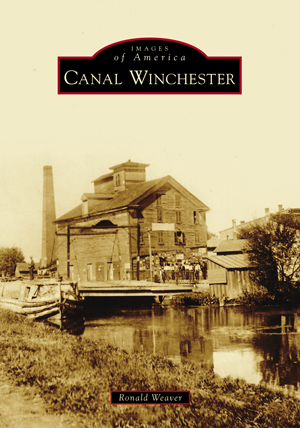Ohio University alum Ronald Weaver ’81 authored a book on Canal Winchester as part of Arcadia Publishing’s Images of America series.
The Columbus Messenger writes about the book in a story headlined “New book illustrates Canal Winchester’s history.”
“There’s a lot of interesting history in Canal Winchester,” said Weaver. “Other area towns, like Pickerington and Groveport, have had Arcadia books published about them. I thought Canal Winchester needed to have one, too.”
Weaver, who recently moved to New Knoxville, Ohio, after living in the Canal Winchester area for many years, has served as an officer and trustee for the Canal Winchester Area Historical Society. He holds a bachelor’s degree in history and political science from Ohio University and a master’s degree in public administration from the University of Dayton.
…
“The photos in the book are a small microcosm of what the Canal Winchester Area Historical Society has,” said Weaver. “It was fun looking at and gathering the photos. There are some great, great images and all the photos are of Canal Winchester.”
Read more in the Columbus Messenger.
 How did Canal Winchester get its name? “Henry Dove, of Virginia, was granted a quarter section (160 acres) of land in Canal Winchester, Ohio, around 1802 and moved his family there in 1811. Prior to his death, Dove divided his land equally between his two sons, Reuben and Jacob. In 1827, the Ohio and Erie Canal was routed through Reuben Dove’s wheat field. After protesting the proposed canal route, Reuben threatened to sue the state. Canal workers suggested that Reuben plat a town and sell lots, and in 1828, Reuben—along with John Colman—did so. They named the town Winchester, since Reuben’s father had lived in Winchester, Virginia. Benefiting from the area’s fertile soil, canal, railroad, interurban, and roadways, Canal Winchester, Ohio, would grow and thrive as an agricultural community.” according to the Canal Winchester website.
How did Canal Winchester get its name? “Henry Dove, of Virginia, was granted a quarter section (160 acres) of land in Canal Winchester, Ohio, around 1802 and moved his family there in 1811. Prior to his death, Dove divided his land equally between his two sons, Reuben and Jacob. In 1827, the Ohio and Erie Canal was routed through Reuben Dove’s wheat field. After protesting the proposed canal route, Reuben threatened to sue the state. Canal workers suggested that Reuben plat a town and sell lots, and in 1828, Reuben—along with John Colman—did so. They named the town Winchester, since Reuben’s father had lived in Winchester, Virginia. Benefiting from the area’s fertile soil, canal, railroad, interurban, and roadways, Canal Winchester, Ohio, would grow and thrive as an agricultural community.” according to the Canal Winchester website.



















Comments